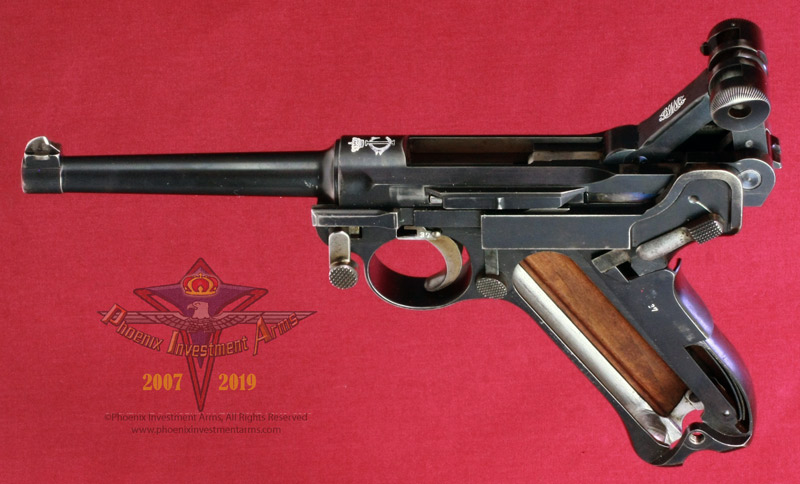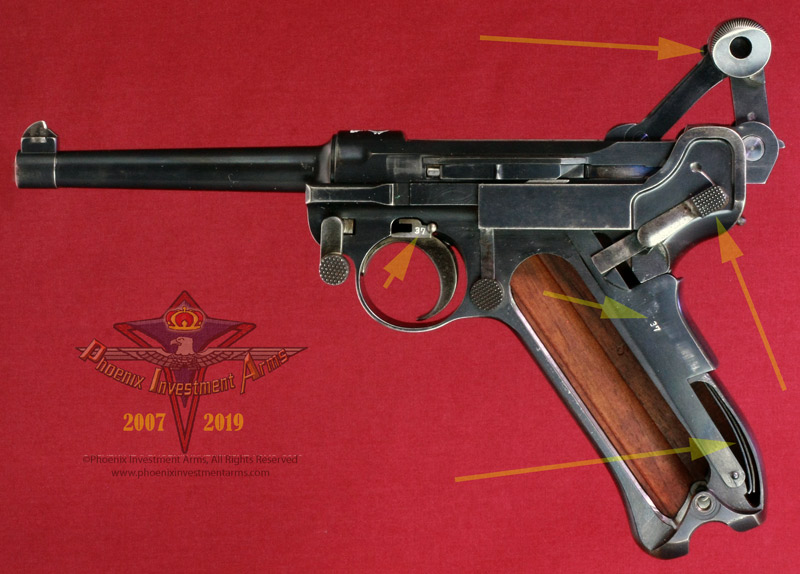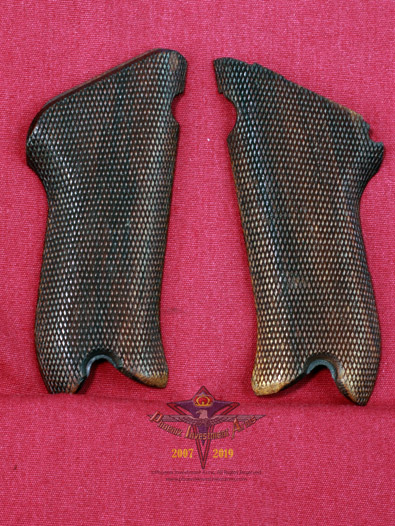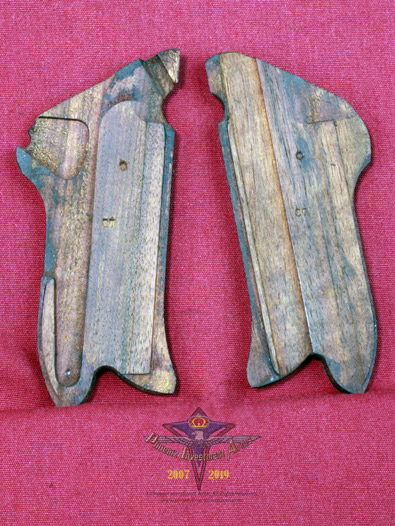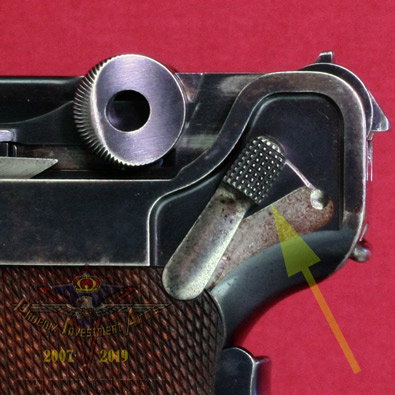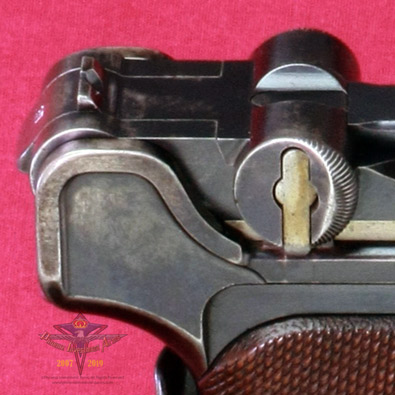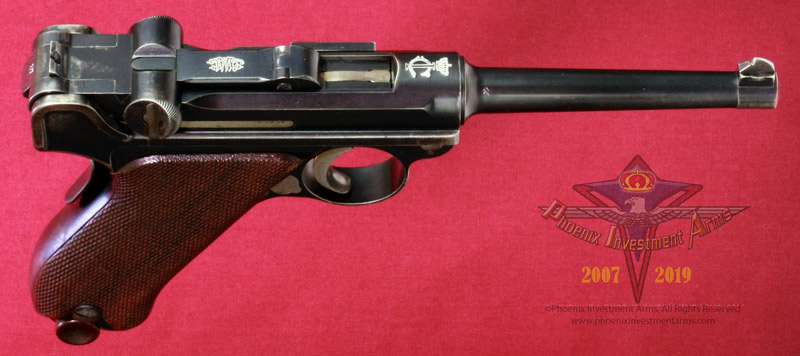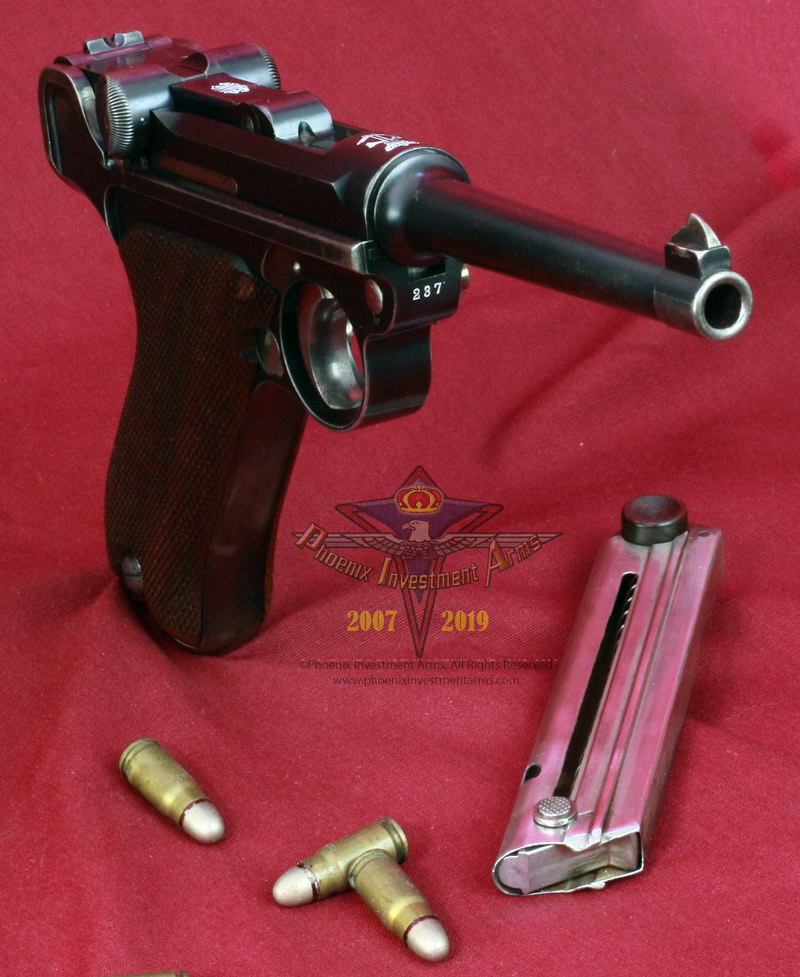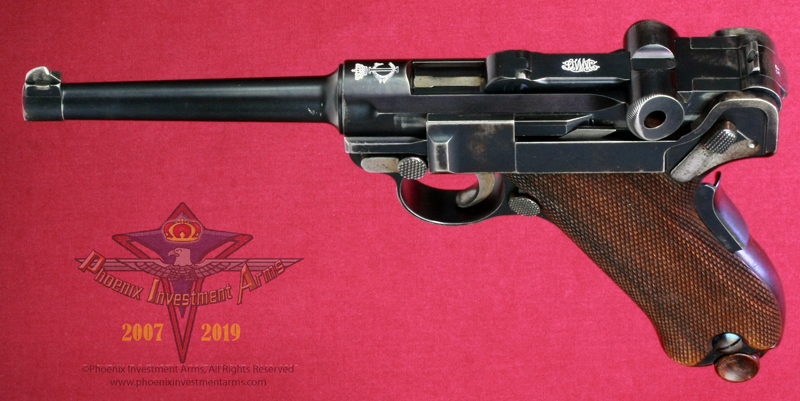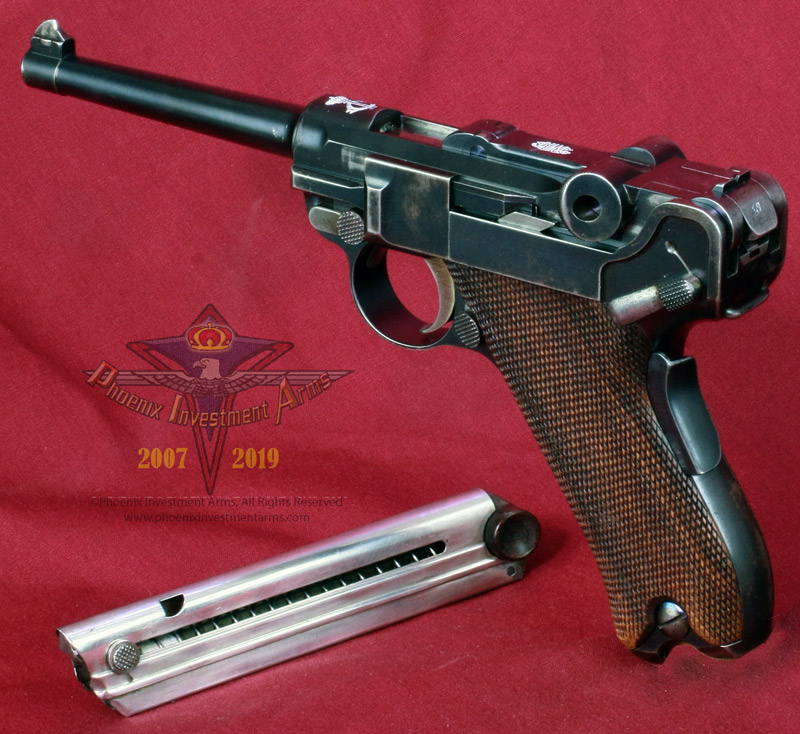PHOENIX INVESTMENT ARMS -
PREMIUM COLLECTOR LUGERS
Genuine German
Luger - Largest Variety of Lugers Offered
Home | Post WWI DWM | Erfurt Lugers | Mauser | Simson Suhl | Krieghoff | Vickers | Swiss Bern | Other Guns
Bottom of Page
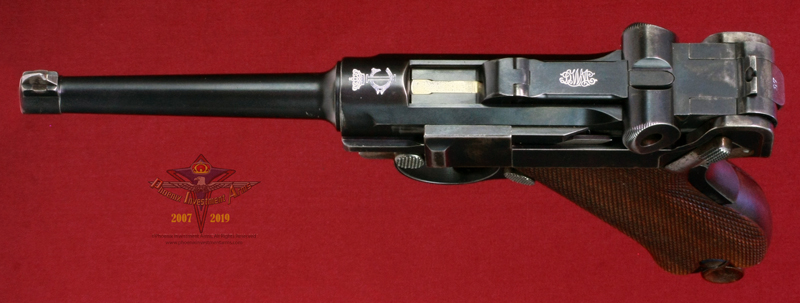 |
|
This is believed to be a one of thirty (1/30) gun order, delivered to the Portuguese and stamped with the King Carlos I in 1906. This was a common tactic of DWM in the 1900's to place the crest of the country on their initial deliveries, begun with the Swiss, continued with the American Eagle and so on. These guns were tested by a commission of Portuguese artillery officers and 2nd test was ordered because of the success of the gun. (2145) |
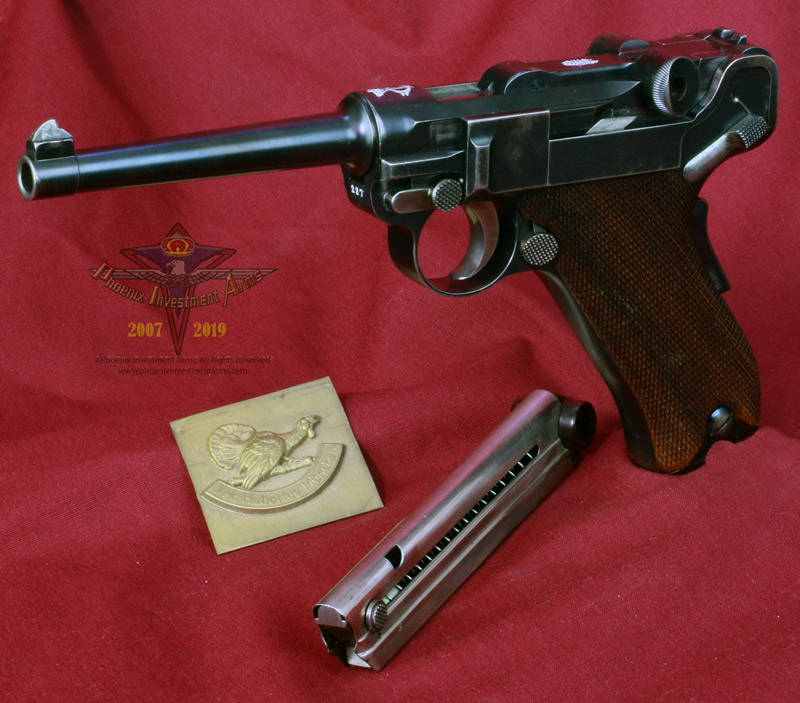 |
|
NOTE: Photographs taken today with the high mega-pixel camera show more than we sometimes can see with the human eye. Magnified close-ups show us tool marks and natural surface conditions that one normally doesn't see in the ordinary handling of the weapon. Photographs are copyrighted, all rights reserved, any extraction, reproduction or display of gun pictures without the express consent of the Phoenix Investment Arms is strictly prohibited. Before your purchase please read Legal for Conditions of Sale. Thank you for your cooperation. |
|
|
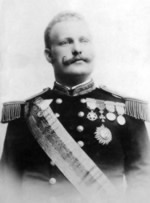

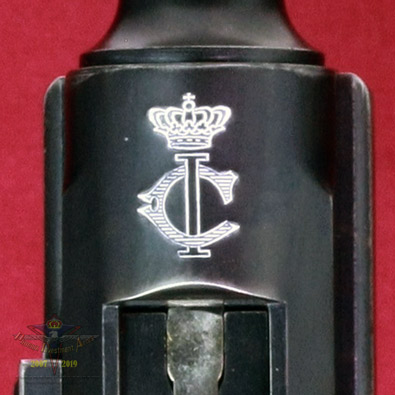
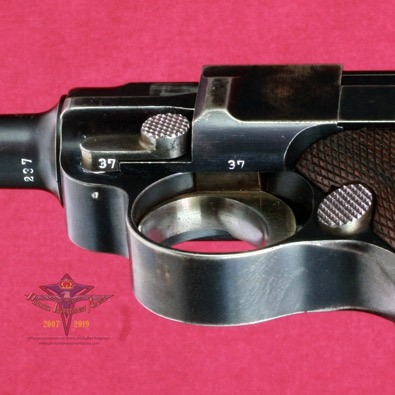
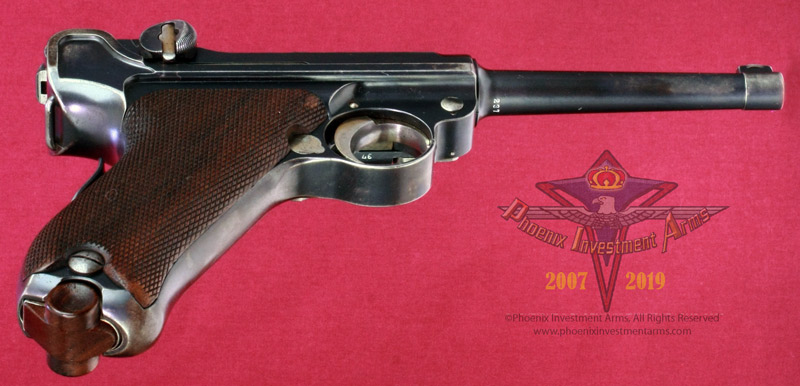
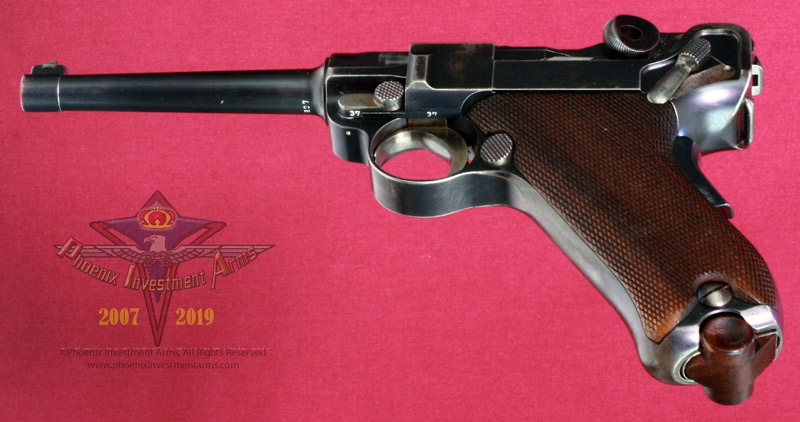

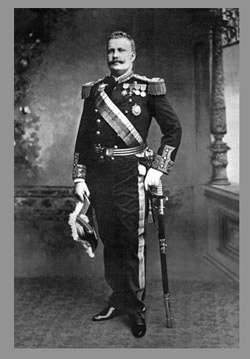
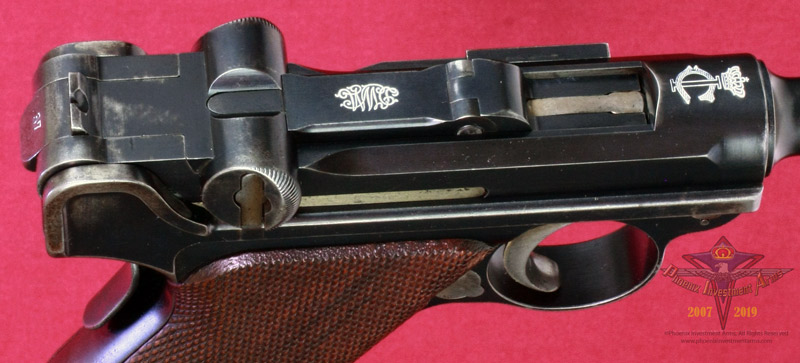
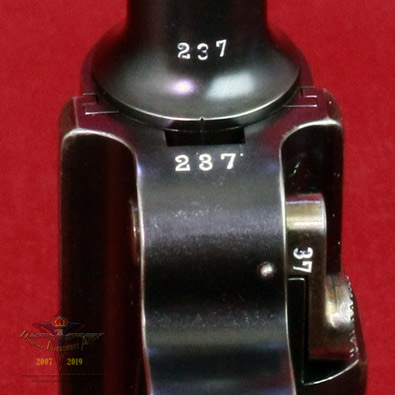
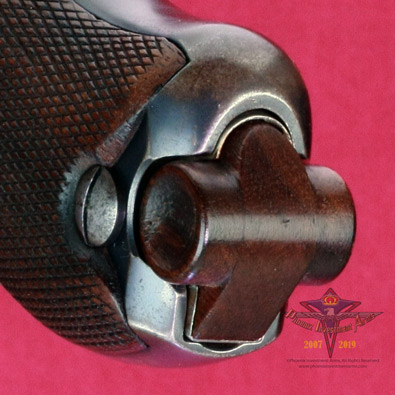

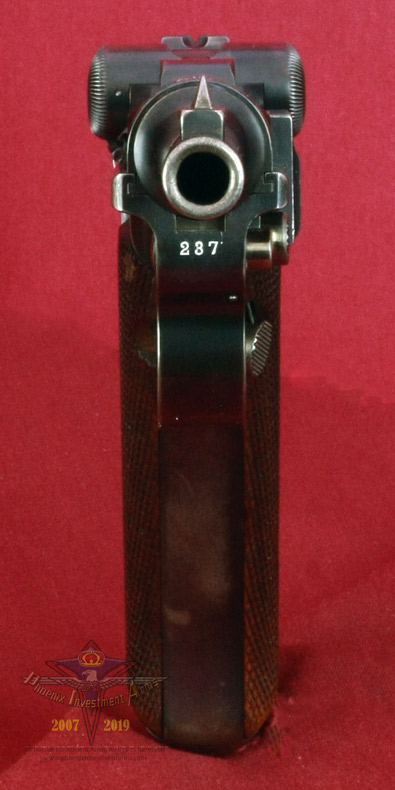
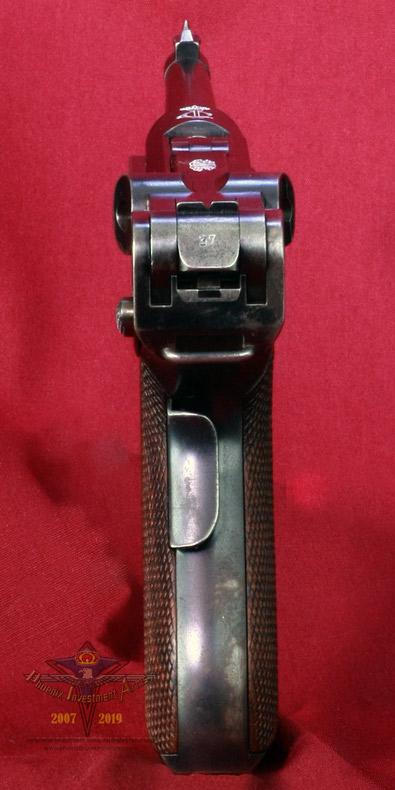

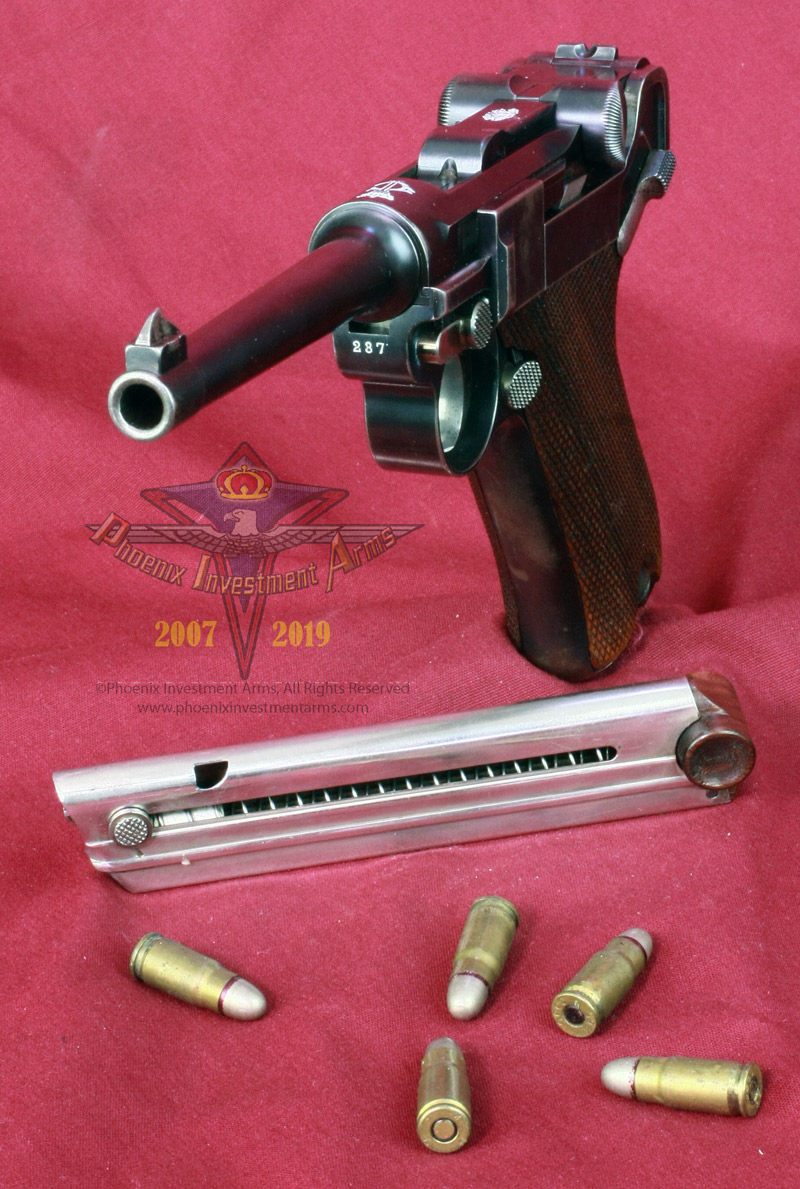
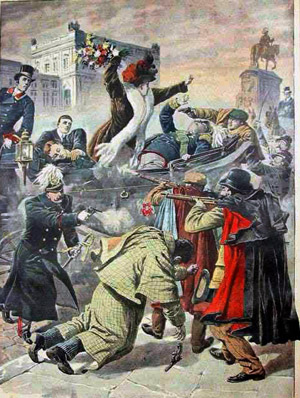 On 1 February 1908, the royal family returned from the Ducal Palace of Vila Viçosa to Lisbon, where they spent time hunting in Alentejo in the hunting season during the winter. On their way to the royal palace, the open carriage with Carlos I and his family passed through the Terreiro do Paço. While crossing the square, shots were fired from the crowd by two republican activists: Alfredo Luís da Costa and Manuel Buíça. Buíça, a former army sergeant fired five shots from a rifle hidden under his long overcoat. The king died immediately, his heir Luís Filipe was mortally wounded and Prince Manuel was hit in the arm. The queen alone escaped injury. The two assassins were killed on the spot by police and bodyguards. Several days later, the younger son, Prince Manuel, was proclaimed king of Portugal; he was the last of the Braganza-Saxe-Coburg and Gotha dynasty and the last king of Portugal as well.
On 1 February 1908, the royal family returned from the Ducal Palace of Vila Viçosa to Lisbon, where they spent time hunting in Alentejo in the hunting season during the winter. On their way to the royal palace, the open carriage with Carlos I and his family passed through the Terreiro do Paço. While crossing the square, shots were fired from the crowd by two republican activists: Alfredo Luís da Costa and Manuel Buíça. Buíça, a former army sergeant fired five shots from a rifle hidden under his long overcoat. The king died immediately, his heir Luís Filipe was mortally wounded and Prince Manuel was hit in the arm. The queen alone escaped injury. The two assassins were killed on the spot by police and bodyguards. Several days later, the younger son, Prince Manuel, was proclaimed king of Portugal; he was the last of the Braganza-Saxe-Coburg and Gotha dynasty and the last king of Portugal as well. 